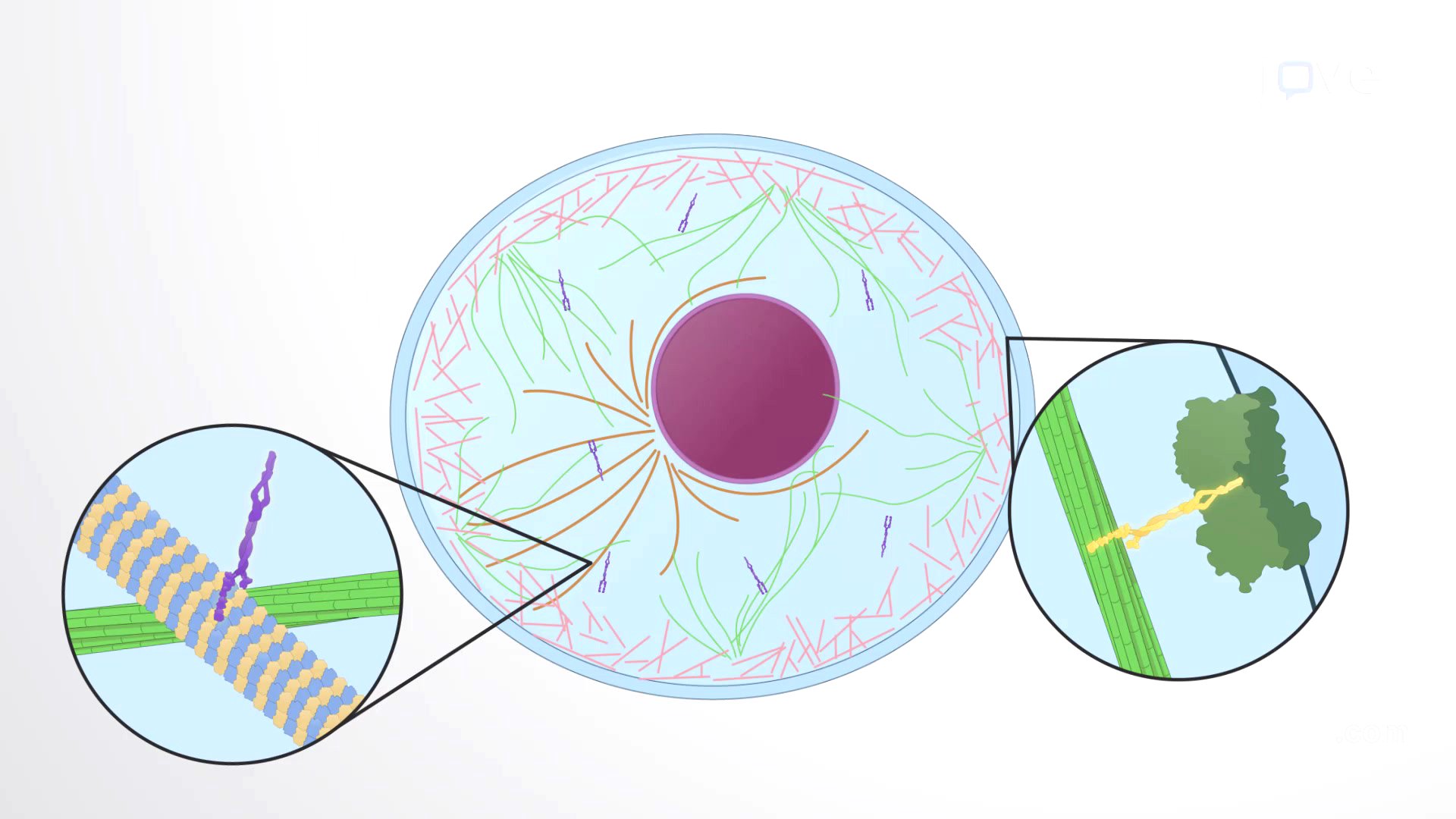TLDR;
The cytoskeleton is a dynamic network of protein filaments within cells, crucial for spatial organization, cell connections, and force generation. It comprises three main types: microfilaments, microtubules, and intermediate filaments, each with unique properties and functions.
- Microfilaments (actin filaments) are involved in cell motility and shape changes.
- Microtubules, with complex dynamics, regulate polymerization and depolymerization.
- Intermediate filaments are more static and provide structural support.
Introduction to Cytoskeleton
The cytoskeleton is a network of protein filaments found in cells, consisting of microfilaments, microtubules, and intermediate filaments. These components differ in assembly dynamics, mechanical properties, polarity, and associated molecular motors. Initially believed to exist only in eukaryotic cells, homologs have since been discovered in prokaryotic cells, suggesting an origin in bacteria and archaea. The cytoskeleton is a dynamic structure involved in spatial organization, connecting the cell to its environment, and generating forces for movement and shape changes. These filaments can rapidly reorganize in response to external signals.
Overview of the Cytoskeleton Components
Microfilaments, or filamentous actin, are spiral filaments of globular actin monomers and are polar. They elongate to produce force for motility and cell shape changes. Microtubules are hollow cylinders made of alpha-beta-tubulin heterodimers, displaying complex assembly and disassembly dynamics regulated by Microtubule Organizing Centres. Intermediate filaments are fibrous proteins formed through multistep processes and are generally static, with dynamics controlled by post-translational modifications.









